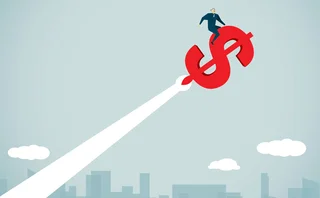
The unthinkable

Traders and risk managers will be returning to their desks this month after the traditional New Year break wondering what 2008 will bring. For the first time in more than five years, the picture looks decidedly iffy.
Credit markets continue to suffer from the woes that began in the US subprime mortgage market: structured investment vehicles remain under pressure, billions of dollars of constant proportion debt obligation notes are on review for a possible downgrade, and several monolines are on the brink of losing their AAA ratings - unthinkable just months ago. At the same time, house prices in the US are falling and credit card delinquencies are on the rise, causing some to predict the possibility of an out-and-out recession.
Meanwhile, interbank lending rates remain high, reflecting reluctance by banks to lend to each other. Three-month sterling Libor hit 6.65% on December 5 - its highest level since September 18 - compared with the Bank of England's (BOE) base rate of 5.75%. A 25-basis-point cut by the BOE the following day did little to ease interbank lending rates - Libor remained between 6.6% and 6.65% until December 12 amid a strong demand for cash from banks ahead of the year end.
Three-month sterling Libor has since fallen below 6% - it fixed at 5.89% on January 2. But the past few months have indicated a worrying phenomenon: the apparent impotence of the world's central banks. Liquidity injections totalling hundreds of billions of dollars, combined with rates cuts from the US Federal Reserve and the BOE, have helped but have by no means resolved the problems. Making the situation trickier is that an ongoing concern about inflation (oil and food prices remain high) means central banks' options, and in particular their ability to cut rates further, are constrained.
In some senses, the current crisis is reminiscent of Japan in the 1990s and the early part of this decade. Stricken by a deflationary spiral, the Bank of Japan cut rates to zero in an attempt to bolster the economy. However, the country's banking sector, weighed down by trillions of yen in non-performing loans, remained comatose. With the manipulation of interest rates no longer an option, only a concerted effort to write off bad loans, combined with a huge injection of public funds, began to turn things around.
That's not to say the situation is anywhere near as serious now - for a start, investment banks have been quick to write off subprime exposures. But it does suggest the world's central banks may need to get a little more creative to help ease the crisis. The first step in this direction occurred on December 13, when five central banks announced a co-ordinated plan to hold a series of auctions to provide billions in loans and accept wider collateral from banks. It does appear to have helped ease interbank lending rates, but if the crisis continues in 2008, further creative measures may be required. The question is: what?
- Nick Sawyer, Editor.
Only users who have a paid subscription or are part of a corporate subscription are able to print or copy content.
To access these options, along with all other subscription benefits, please contact info@risk.net or view our subscription options here: http://subscriptions.risk.net/subscribe
You are currently unable to print this content. Please contact info@risk.net to find out more.
You are currently unable to copy this content. Please contact info@risk.net to find out more.
Copyright Infopro Digital Limited. All rights reserved.
You may share this content using our article tools. Printing this content is for the sole use of the Authorised User (named subscriber), as outlined in our terms and conditions - https://www.infopro-insight.com/terms-conditions/insight-subscriptions/
If you would like to purchase additional rights please email info@risk.net
Copyright Infopro Digital Limited. All rights reserved.
You may share this content using our article tools. Copying this content is for the sole use of the Authorised User (named subscriber), as outlined in our terms and conditions - https://www.infopro-insight.com/terms-conditions/insight-subscriptions/
If you would like to purchase additional rights please email info@risk.net
More on Credit markets
Liquidnet sees electronic future for grey bond trading
TP Icap’s grey market bond trading unit has more than doubled transactions in the first quarter of 2024
Single-name CDS trading bounces back
Volumes are up as Covid-driven support fuels opportunity for traders and investors
Podcast: Richard Martin on improving credit migration models
Star quant proposes a new model for predicting changes in bond ratings
CME to pass on Ice CDS administration charges
Clearing house to hike CDS index trade fees from July after Ice’s determinations committee takeover
Buy side fuels boom in single-name CDS clearing
Ice single-name CDS volumes double year on year following switch to semi-annual rolls
Ice to clear single-name bank CDSs from April 10
US participants will be able to start clearing CDSs referencing Ice clearing members
iHeart CDS saga sparks debate over credit rules
Trigger decision highlights product's weaknesses, warns Milbank’s Williams
TLAC-driven CDS index change tipped for September
UK and Swiss bank Holdco CDSs likely inclusions in next iTraxx index roll, say strategists







